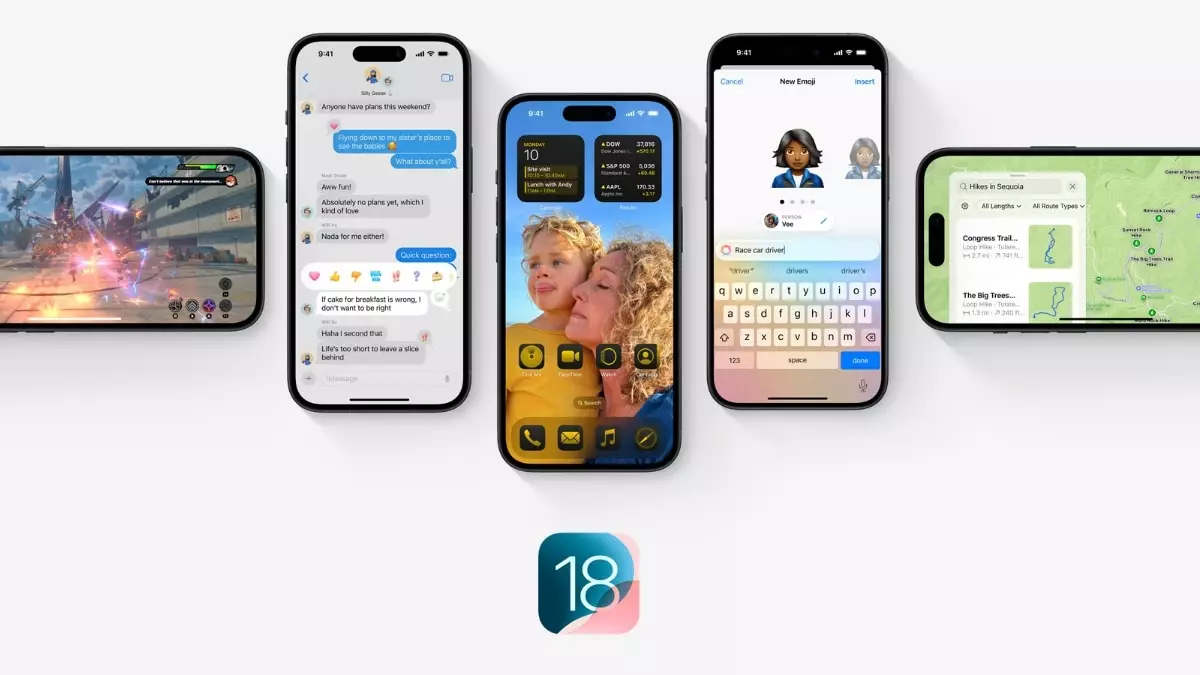Apple has just concluded its highly anticipated launch event, showcasing the iPhone 16 series, including the standard iPhone 16, the iPhone 16 Plus, the iPhone 16 Pro, and the premium iPhone 16 Pro Max. The event, titled ‘It’s Glowtime,’ took place on September 9, and fans eagerly await the devices’ availability starting September 20. However, what sets this launch apart is not merely the array of models but rather the accompanying roll-out of iOS 18, which promises a wealth of new features and customization options for users across various devices.
One of the standout features of iOS 18 is the emphasis on customization. Users will now have the ability to change icon tints, manipulate app arrangements on their home screens, and tailor widgets to match their individual preferences. This level of personalization represents a significant shift in Apple’s approach to user interface design, allowing for a more engaging and individualized experience.
The forthcoming operating system update will be accessible to older iPhone models, allowing current users—who may not plan to upgrade to the new iPhone series—to experience the latest features ahead of new iPhone owners. Starting September 16, devices such as the iPhone SE, iPhone XR, and later models will receive the update, showcasing Apple’s commitment to maintaining a connection between older and newer user bases.
While iOS 18 promises impressive customization options, the real intrigue surrounds Apple Intelligence, a suite of advanced features powered by generative artificial intelligence. Though these capabilities will launch later via an update, they represent a pivotal moment for Apple. Users of the new iPhone 16 series will be front-row participants in this AI evolution, as these advanced features, which include a revamped Siri, will be available exclusively to them, while only certain functionalities will be accessible on older models.
This significant stride into AI technology indicates Apple’s aim to integrate intelligent assistance more deeply into the user experience—a trend seen across the tech industry. With artificial intelligence becoming a staple of modern smartphones, Apple’s focus not only on innovation but also on intelligent integration points to a future where technology adapts more seamlessly to individual user needs.
The improvements in iOS 18 extend beyond customization and AI. Essential applications like the Photos app and Control Center are also receiving significant upgrades. The Photos app will aim for enhanced categorization, making it easier for users to navigate their media, an increasingly important function as photo libraries continue to grow exponentially.
Additionally, the Control Center is undergoing a much-needed overhaul. Users will have the ability to rearrange and resize controls according to their preferences, simplifying access to essential functions. With just a swift swipe down from the homescreen, users can tailor their control layout, making interactions more efficient and personalized—a feature that contrasts starkly with the somewhat static nature of previous versions.
The messaging capabilities on iOS 18 are also set to receive noteworthy enhancements. Allowing for animated effects within messages and the scheduling of message deliveries ensures that users can communicate more creatively and thoughtfully. Moreover, the introduction of support for Rich Communication Services (RCS) messaging marks a significant advancement in iMessage capabilities, following industry standards towards better interoperability.
With these new features, Apple aims not only to enhance individual user interactions but to compete more robustly in a market where messaging functionalities are continually evolving. This adaptive approach could further solidify Apple’s position within a competitive tech landscape.
In summation, Apple’s launch of the iPhone 16 lineup coupled with the roll-out of iOS 18 signifies an exciting new era for both new and existing iPhone users. With a strong focus on customization, advanced AI integration, and improved functional applications, the upcoming changes reflect Apple’s commitment to innovation and user satisfaction. As consumers gear up for the launch, it’s clear that the iPhone 16 series aims not just to meet expectations but to reshape what users can anticipate from their devices. The anticipation surrounding these developments paints a promising picture for the future of Apple’s ecosystem—an ecosystem that is increasingly geared towards personalization and intelligent features.


Leave a Reply